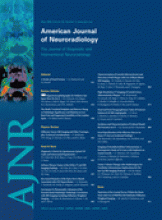Abstract
BACKGROUND AND PURPOSE: Mild cognitive impairment (MCI) is considered by many to be a prodromal phase of Alzheimer disease (AD). We used voxel-based morphometry (VBM) to find out whether structural differences on MR imaging could offer insight into the development of clinical AD in patients with amnestic MCI at 3-year follow-up.
MATERIALS AND METHODS: Twenty-four amnestic patients with MCI were included. After 3 years, 46% had progressed to AD (n = 11; age, 72.7 ± 4.8 years; women/men, 8/3). For 13 patients (age, 72.4 ± 8.6 years; women/men, 10/3), the diagnosis remained MCI. Baseline MR imaging at 1.5T included a coronal heavily T1-weighted 3D gradient-echo sequence. Localized gray matter differences were assessed with VBM.
RESULTS: The converters had less gray matter volume in medial (including the hippocampus) and lateral temporal lobe, parietal lobe, and lateral temporal lobe structures. After correction for age, sex, total gray matter volume, and neuropsychological evaluation, left-sided atrophy remained statistically significant. Specifically, converters had more left parietal atrophy (angular gyrus and inferior parietal lobule) and left lateral temporal lobe atrophy (superior and middle temporal gyrus) than stable patients with MCI.
CONCLUSION: By studying 2 MCI populations, converters versus nonconverters, we found atrophy beyond the medial temporal lobe to be characteristic of patients with MCI who will progress to dementia. Atrophy of structures such as the left lateral temporal lobe and left parietal cortex may independently predict conversion.
- Copyright © American Society of Neuroradiology












